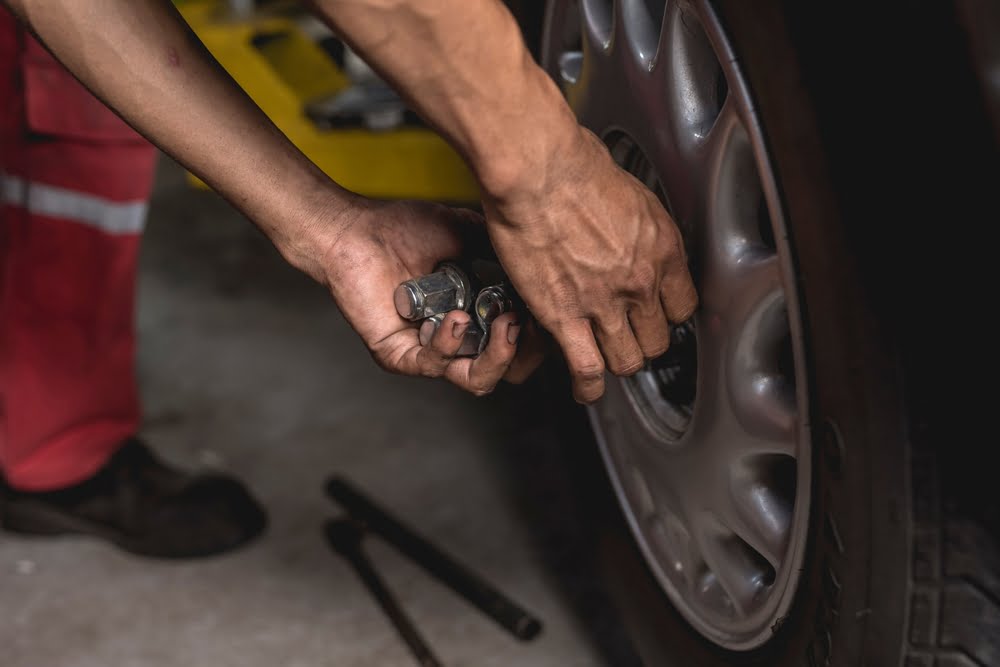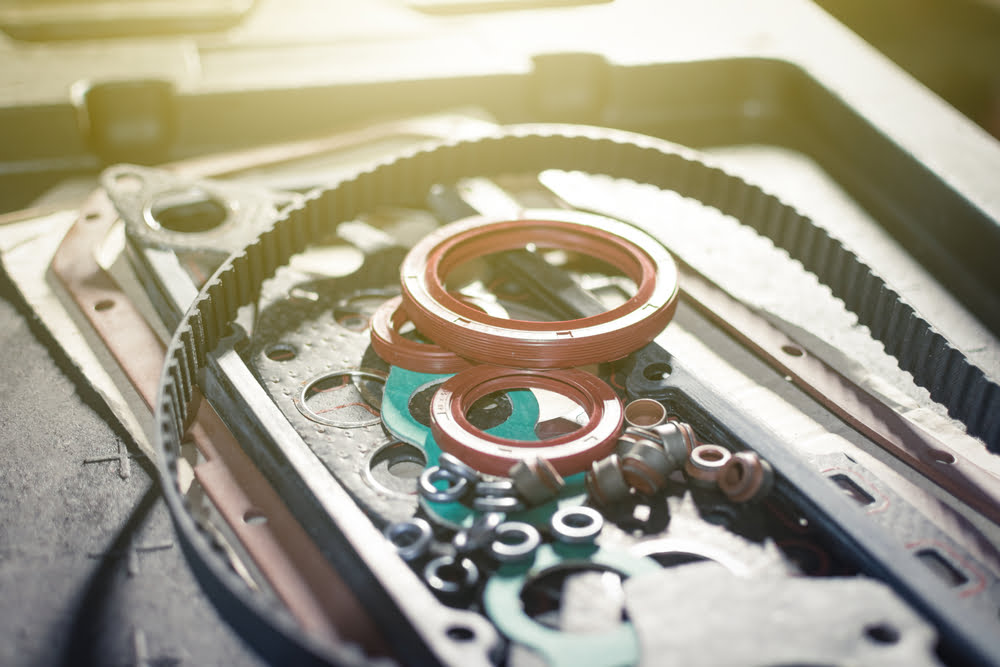
Lug nuts and bolts are pretty small. They’re not one of the seven main parts of a tire, and it’s easy to give them little or no thought unless you need to change a flat. However, these small components play an integral role in determining wheel torque, which in turn determines how fast your car drives and the longevity of your tires.
What is Wheel Torque?
Wheel torque is the measurement used to determine the tightness of vehicle wheel lug nuts. The measurement used is called foot-pounds and the higher the foot-pounds, the more weight your wheels can hold and the faster the vehicle can move.
How To Check Wheel Torque
To check wheel torque, start by lifting the vehicle with a jack. Then, use an impact gun, power impact wrench, or torque stick to remove the lug nuts from the wheel. Afterward, manually reattach each lug nut by hand. Finally, use a manual torque wrench to tighten the nuts according to the lug nut torque specifications in the vehicle’s owner’s manual. Keep in mind that lug nuts must be removed and replaced in a specific pattern, not randomly. Listen for a distinctive “click” sound to confirm that each lug nut has reached the correct torque.
Why Follow a Specific Pattern?
The lug nuts keep the tired balanced and even. Thus, they need to be removed and tightened in a specific pattern to prevent tire wear and/or uneven stress distribution.
Proper Tightening and Loosening Pattern for Lug Nuts
Following are instructions for removing nuts with a four-, five-, six-, and eight-lug pattern. The same pattern should also be used when tightening nuts.
4-Lug Bolt Pattern
When loosening a tire with four lug nuts, start with the top bolt. Second, remove the bottom bolt. Next, remove the bolt on your left. Finally, remove the bolt on your right.
5-Lug Bolt Pattern
A wheel with a five-lug bolt pattern will have one lug nut on top, two on the bottom, and one on either side. Start by removing the lug nut on the top. Next, remove the nut on the bottom left. The third lug nut to remove is the one on the right side. The fourth nut you’ll remove is the nut on the left side. Finally, remove the nut on the bottom right.
6-Lug Bolt Pattern
A wheel with a six-lug bolt pattern will have one nut on the top, one nut on the bottom, two nuts on the left, and two nuts on the right. Once again, you’ll start by removing the top lug nut. Next, remove the bottom nut. Next, remove the top left nut. The fourth nut to remove is the one on the bottom right. The fifth nut to remove is the one on the bottom left. Finally, remove the top right nut.
8-Lug Bolt Pattern
This pattern will have a top nut, a bottom nut, and three nuts on each side. First, remove the top nut. Then, remove the bottom nut. The third nut to remove is the one on the top right. The fourth nut to remove is the one on the bottom left. Next, remove the nut on the far right, before removing the nut on the far left. The seventh nut to remove is the one on the bottom right. Finally, remove the bolt on the top left side.
Always Follow the Manufacturer’s Specifications
While there are general guidelines you should follow when checking and adjusting torque, it’s wise to always read and follow the manufacturer’s specifications. There are scores of models on the market and the way you check and repair one vehicle may not be the best way to handle the next vehicle. Checking manufacturer specifications can save you a lot of time and hard work. It can also protect you from liability if the car is involved in a vehicular accident.
Using a Calibrated Torque Wrench
A calibrated torque wrench will enable you to accurately measure torque and ensure bolts on the vehicle are neither too tight nor too loose. For optimal performance and to meet industry standards, the torque wrench should be calibrated once a year or every five thousand cycles, whichever comes first. Naturally, like all other tire machine parts, a torque wrench would need to be replaced if it becomes too old or sustains damage that can’t be repaired by an expert. Signs you need a new torque wrench include a broken square drive, bent barrel, and damage to the wrench’s indexing.
Recommended Torque Range
Lug nut torque specs typically range from 75 to 100 ft-lb for most vehicles. However, it’s important to check the owner’s manual for specific instructions. What’s more, bear in mind that tire size can also affect recommended torque, as putting large tires on a vehicle with a small engine can significantly increase its torque.
What Happens if You Under- or Over-Tighten?
Lug nuts must be tightened just right. Under-tightening can result in the wheels coming loose on the road, which could cause a bad accident. Over-tightening the nuts can damage the wheel and/or the threats on the nuts.
SVI: Leading Parts Provider for Auto Equipment
Every automotive repair shop needs reliable tools and fast access to a wide selection of automotive parts and automotive tool parts in order to properly serve its customers. That’s why SVI offers more than 40,000 products to meet the needs of automotive shop owners throughout the United States. What’s more, our two ready-ship warehouses offer fast shipping to ensure that needed parts and machinery reach you without undue delay. Get in touch with us to learn more about our products and services, or to request a custom price quote on specific products.

